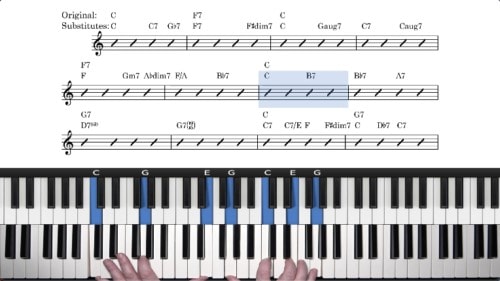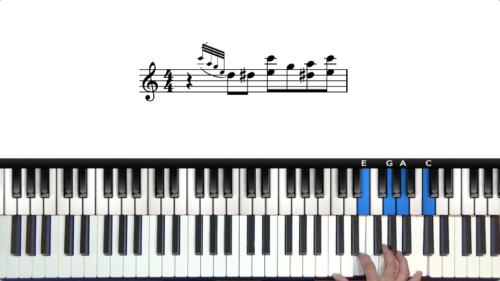New Orleans Style Turnarounds
In this lesson Jon expands on the turnaround at the end of the blues form and shows us ways to expand and embellish it.
The turnaround in its most basic form consists of four chords, beginning and ending with C. It should sound familiar, we often hear guitarists using it to start a song.
The Drone Note In The Turnaround
In the last lesson we had a progression where the top note, a G, remained the same through four chords. We can see this as a ‘drone note’ that stays constant throughout the changes. We have a similar situation in the New Orleans style Turnaround with a C on top as we move through each chord. It acts like a pivot against the other moving notes and accentuates the sense of motion.
Adding Trills To Turnarounds
The turnaround is often embellished with trills in both the left and right hand. These kinds of sounds were introduced by early blues piano players and they act in a way like a drumroll.
It’s difficult to show exactly how they should be played because every player does them differently and they only really make sense when played up to speed. These trills can be simple or elaborate and when well executed they add movement and colour to the turnaround.
Lesson Downloads
-
Turnarounds Lesson Notation File Type: pdf
Practice Tips
-
This blues turnaround works perfectly without the trills and embellishments so don't be afraid to incorporate it into your playing and worry about the trills once it is more familiar.
-
It should be noted that at the end of the turnaround you can either start the 12 bar form again or end the song. Assuming we are in the key of C, you could play Ab7 - G7 to start the form again or Db7 - C7 to end the song. Jon shows this in the previous lesson where he plays the form multiple times before ending.
- The notation of the trills is only a rough guide to what Jon is playing - it's a good starting point but pay attention to what he is doing if you want to go into detail about playing the trills.







